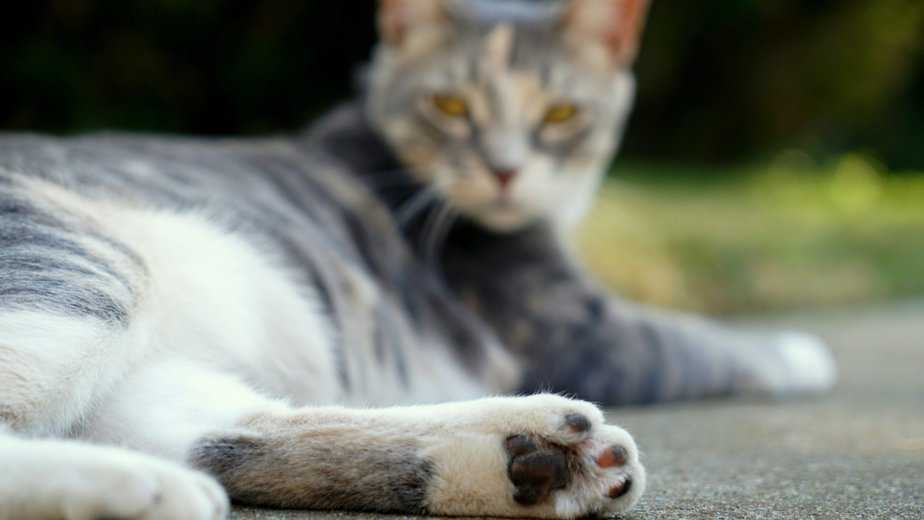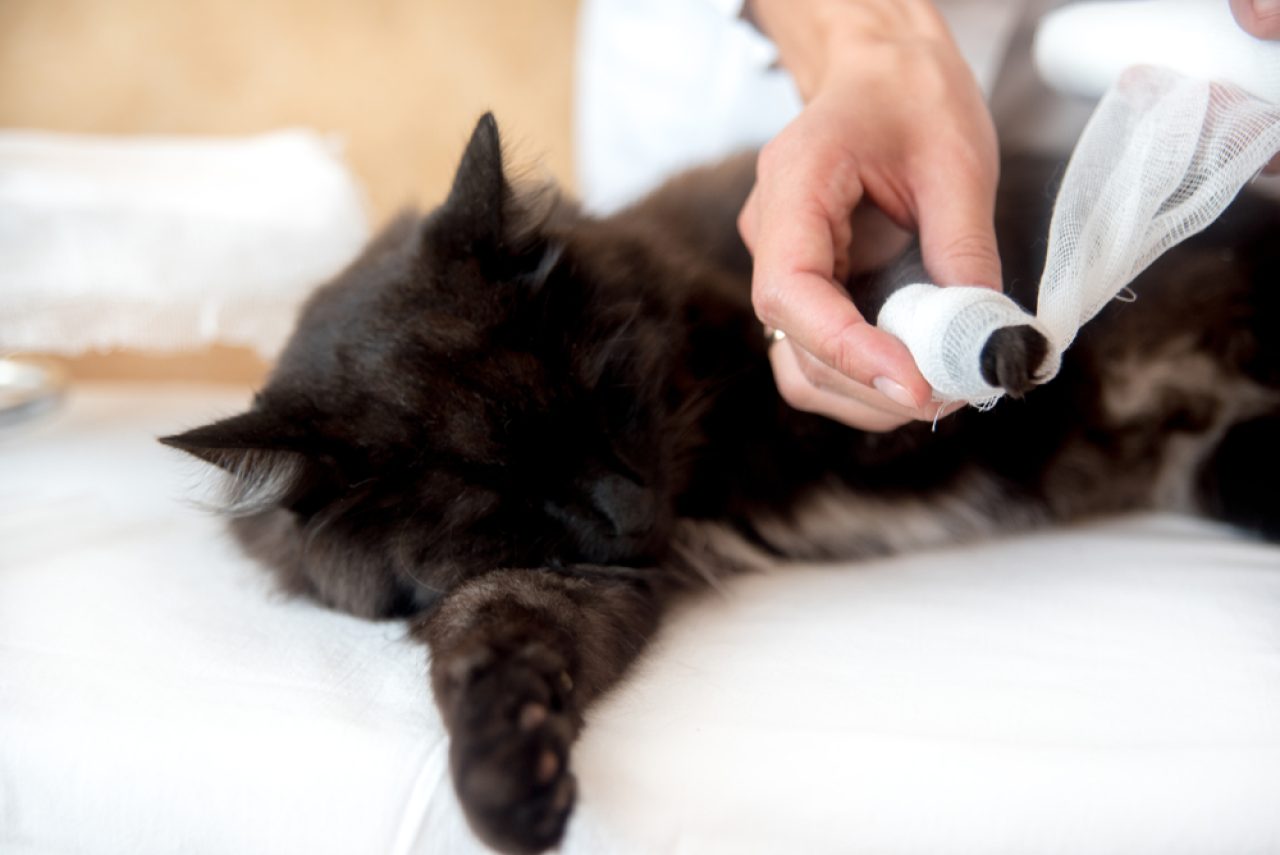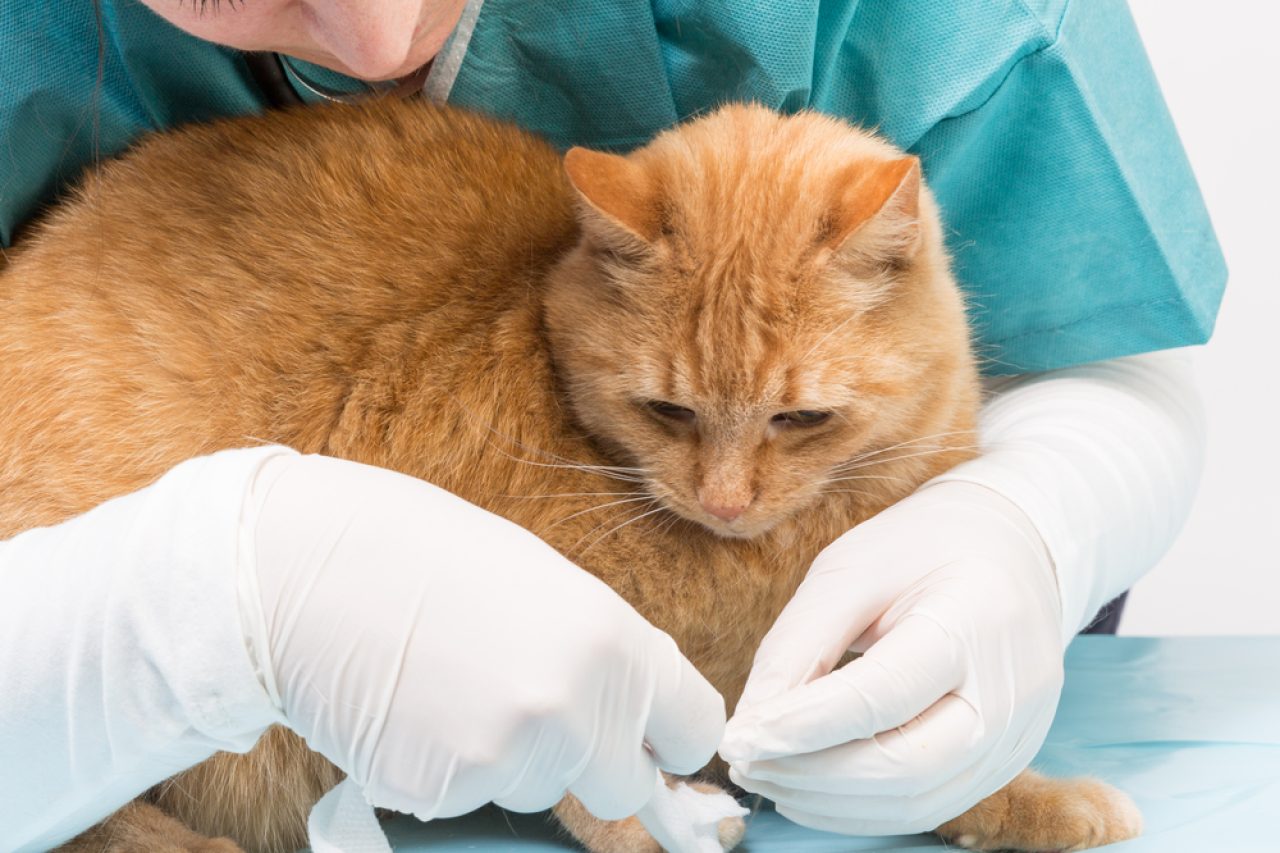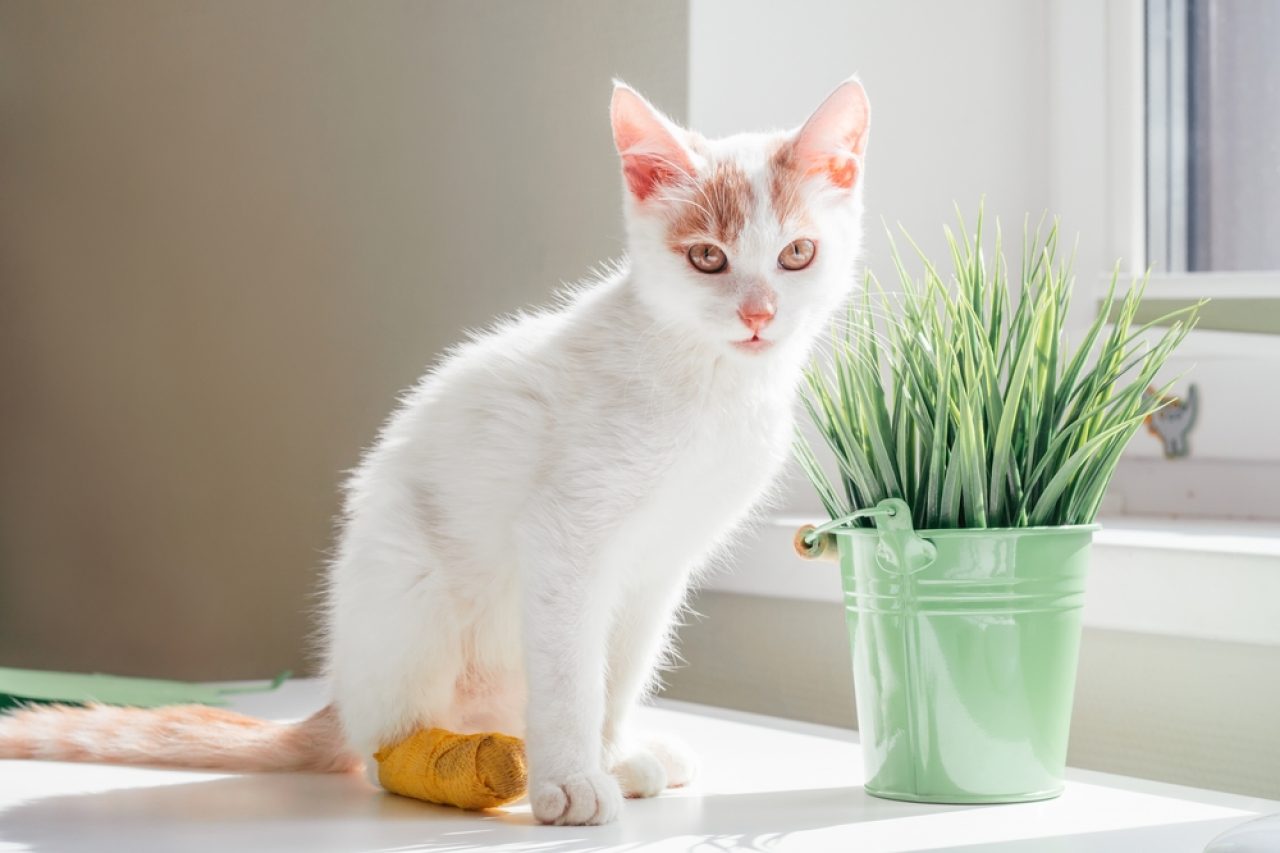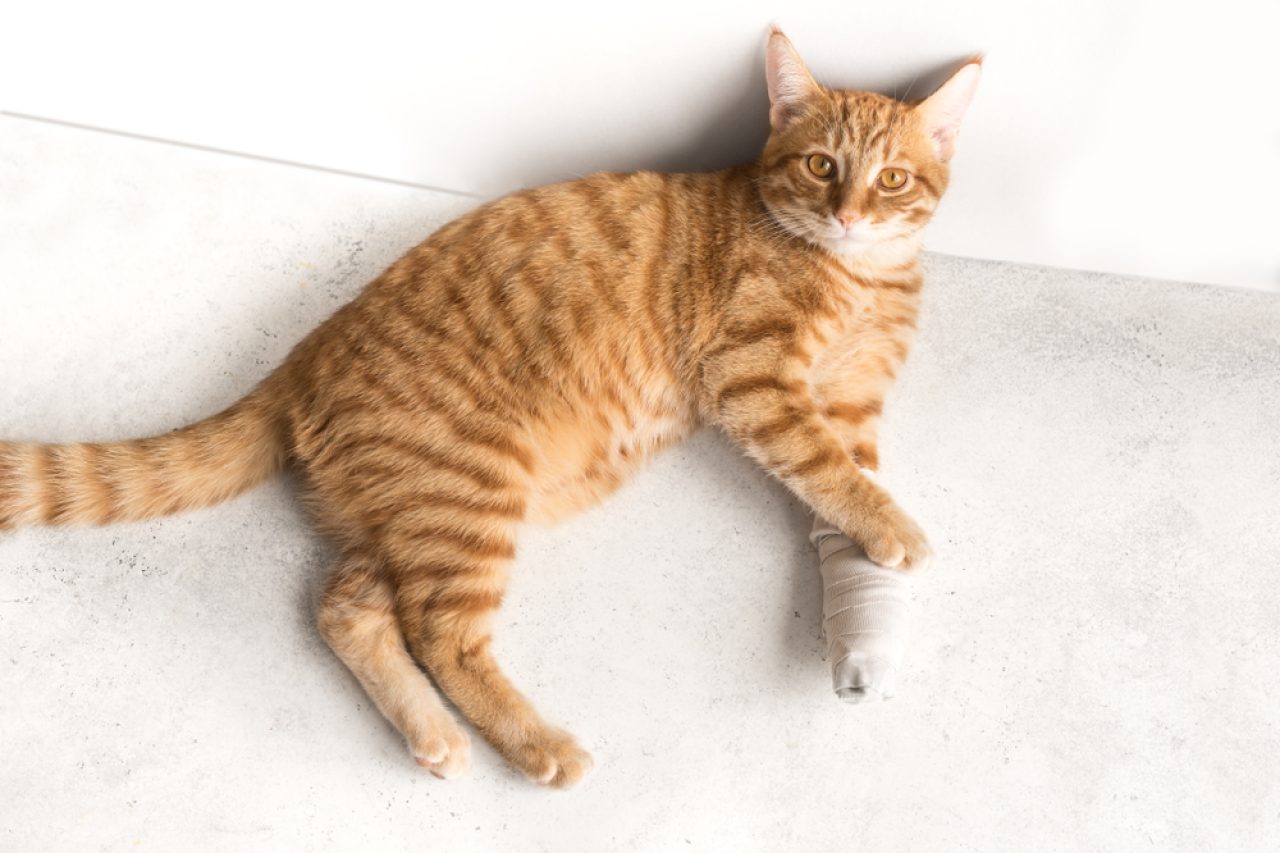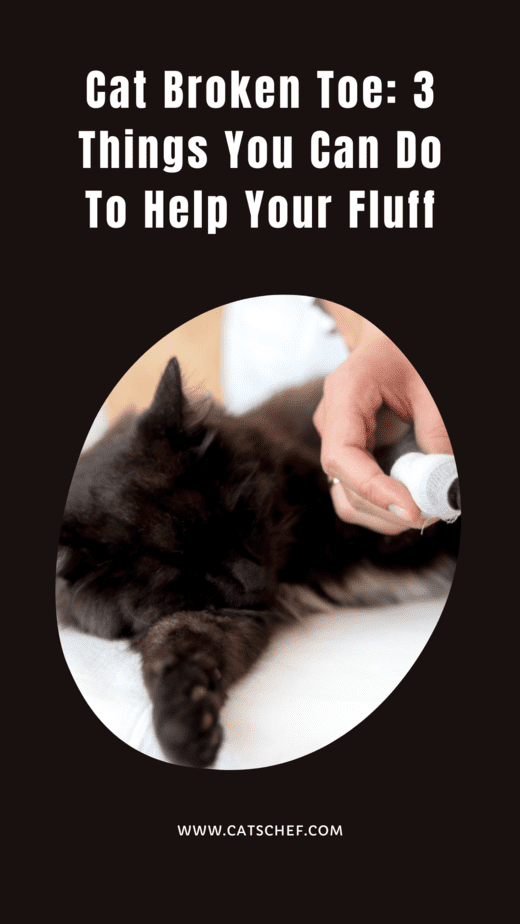📖 Table of Content:
We all know how flexible our kitties are, with their superhero type of balance and reflexes that they can always rely on. They love jumping from high places and climbing just about anything. However, sometimes their little stunts end with an injury, such as your cat’s broken toe.
If this happens to your feline – don’t panic. It’s important to stay calm and collected because your kitty is already in enough distress. You need to be her rock and a source of comfort, so don’t create more panic, no matter how much you want to.
We get it, the last thing every cat parent wants to see is their furchild in pain, but accidents happen and that’s completely normal. A broken toe in cats isn’t something you should lose your mind over. If you react to it immediately, it usually heals with no complications.
Your first instinct is probably telling you to put your kitty in a car and rush her to the vet. However, when it comes to broken toes in cats, that might not be the smartest thing to do. If you’re not sure what to do, we’re here to help. Let’s go over some symptoms of a cat’s broken toe, and what you can do to help your fluff.
Sings and symptoms of a cat’s broken toe
Our felines are proud beings that usually hide their pain, discomfort, and weakness. Because of that, it’s often hard to notice that there’s anything wrong with your fluffy friend. Always look for any signs of different behavior in your kitty, as it can tell you a lot about her overall well-being.
When it comes to a cat’s broken toe, here are a couple of things you should keep an eye out for:
- Hiding
- Limping
- Loss of appetite
- Swelling and bruising of her paw and toe
- Moaning, hissing, crying, and growling.
All of these should be pretty strong indicators that there’s something wrong with your cat. Occasionally, bone fractures in felines can be so bad that there’s a small piece of bone sticking out. In that case, noticing blood is a good enough sign that you should act immediately.
What to do when you notice your cat’s broken toe
Although it’s necessary to take your furball to the vet once you notice that she’s broken her toe, in this case, it shouldn’t be the first thing you do. There are a couple of things you should do at home that increase the chances of your cat’s broken toe healing properly.
Before you do anything, you have to remember that cats’ behavior changes when they’re in pain. Because of that, no matter how much your fluff loves you, she might attack you. To avoid getting hurt, put on protective gloves before dealing with your little patient.
1. Contact the vet
Although you should definitely take your kitty to the vet, it’s important to contact them first. Make sure to let them know the state your kitty’s in, and provide them with as many details as possible so that they know what to expect. That way, they can prepare the place and equipment to deal with your fluff right away.
2. Splint your cat’s broken toe
Although it might seem scary because you don’t want to hurt your dear feline, it’s important that you splint your cat’s broken toe right away. Make sure you’re extra gentle with this so that you don’t cause more damage to the bone.
If you notice any bones sticking out, use sterile gauze to fully cover the area. When the wound is completely covered, you can go ahead and roll the gaze all over her paw in an 8-figure pattern.
To make everything tight and in place, try extending the gaze halfway up your kitty’s leg. Make sure it’s all nice and tight, but not to the point that it stops blood circulation to the limb.
Be patient and calm. Our feline companions aren’t big fans of us touching their paws, especially when they’re hurt. Because of that, she might refuse your help or try to get out of your hands. Make sure to calm her down and be gentle. Talk to her, try petting her, and slowly start covering her injury.
3. Make your cat comfortable and take her to the vet
Once her paw is all ready and gauzed up, take your kitty’s favorite blanket, gently wrap her in it, and put her in her carrier. This will make her feel safe and comfortable. Make sure that you keep the rocking motion to a minimum, to avoid stressing her out even more.
Once you get to the clinic, the vet will conduct different diagnostic tests. It will help them determine the severity and the exact location of the injury. Those often include multiple X-rays of the potential fracture, which enables them to see a complete picture.
The type of treatment depends on many factors, including your kitty’s age, the number of broken bones, and the type of injury. The most common treatments are:
- Pain medications that help relieve the pain
- Antibiotics to prevent the possible infections
- Putting your kitty’s paw in a cast to keep her foot and toe in place.
How to take care of your cat’s broken toe at home
Once the vet prescribed your kitty a proper treatment, she’ll probably be sent home right away. That’s what usually happens with simple fractures, such as a cat’s broken toe.
Once your dear feline is finally home, make sure she’s comfortable and at peace. All of this was a lot more stressful for her than it was for you, so make sure she has some time to calm down, with you by her side.
No matter how much she’d like to run around afterward, make sure to restrict her movement as much as possible so that her bones heal properly. In the case of painkillers and sedation, only use them if they’re prescribed by her vet.
If her paw is in a cast or splint, make sure to keep it clean and dry to avoid infections. On top of that, make sure to monitor her leg. If there’s any swelling, there’s a chance her cast is too tight. In that case, seek veterinarian help as soon as possible to avoid any further complications.
What you can do to prevent this from happening again?
No matter how much they love napping, our fluffy companions love to be active, too. When they’re ready for their daily dose of zoomies, there’s not much you can do until it passes. Sometimes, their little stunts can lead to injuries, which is why it’s important to keep their environment as safe as possible.
1. Keep your kitty inside
An injury such as a cat’s broken toe is more likely to happen to kitties who like to roam outside. There are many threats that can lead to this, such as traffic or catfights. Because of that, letting your fluff spend her days indoors would be the easiest way to keep her safe.
For many cat parents, it might seem like keeping their feline inside could bore her. That’s always a possibility, considering how curious our little fluffy rebels can be. Luckily, there are many ways in which you can help your indoor kitty stay entertained and active.
Make your cuddle buddy fall in love with her home. Provide her with a comfy bed, a peaceful environment, and fun toys. For times when she wants to be extra active, a nice cat tree or a scratching post would be purrfect. With all of this at her disposal, your dear purrer will never want to leave her piece of heaven.
2. Restrict her access to elevated places
Giving your kitty access to your terrace seems like a great way for her to get some sunshine and fresh air. However, that’s probably not the best idea, especially if your balcony isn’t cat-proof.
Restricting her access to elevated places would be the safest option for your kitty. Although they’re known for their perfect balance and always landing on their feet, our little acrobats can still injure themselves. It’s better to be safe than sorry.
3. Be careful not to step on your fluff
Stepping on your feline might sound silly, it’s still worth mentioning. We all know how much our kitties love sneaking around. Sometimes, they’re so good at hiding, that you don’t even see them. It’s often the case that cat parents step on their dear feline’s tail or paw, which could lead to some serious injuries.
We know you don’t want to hurt your kitty, so make sure you always keep your eyes on the ground. You never know who might be sneaking around the corner, waiting to attack you.
